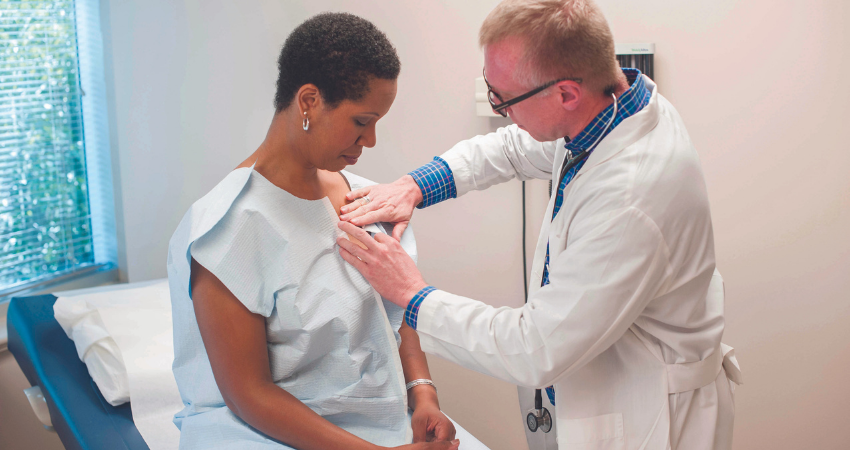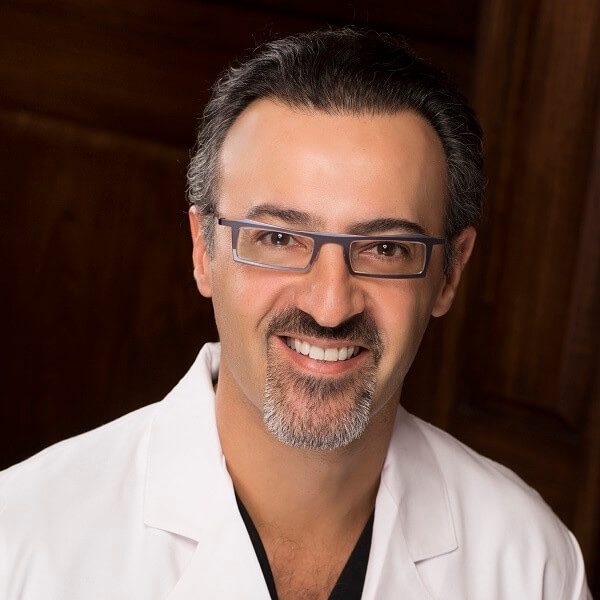Aesthetic flat closure: An option after breast cancer surgery
- 10/18/21

A breast cancer diagnosis brings with it multiple tough treatment decisions. One of these decisions is whether to have breast reconstruction.
There are many options available for breast reconstruction today. These range from breast implants to autologous (tissue) flap procedures like the DIEP flap. But these options aren’t always what people want.
Going flat, or choosing aesthetic flat closure, is the decision to remove both breasts and create a flat chest wall contour instead of having breast reconstruction. It is an option for
- anyone considering mastectomy because of a breast cancer diagnosis
- anyone considering prophylactic surgery because they are at high risk of developing breast cancer
- those who have already had surgery as part of their breast cancer treatment and now wish to be symmetric without reconstruction, with a truly flat chest contour
- anyone who has had breast reconstruction already, is unhappy with their results, and now prefers to go flat instead
What makes aesthetic flat closure different
Regardless of the type of mastectomy being performed, all mastectomies remove the breast. When going flat, most of the overlying breast skin and (usually) the nipple-areola are removed, ideally leaving a uniform, truly flat contour.
It is important to discuss the surgical plan and expectations with your breast surgeon before having surgery. Mastectomies can create chest contour irregularities and leave excess soft tissue over the side of the chest known as “dog ears.” Some can also be left with too little tissue to pad their ribcage. People may find these post-operative results unsightly or bothersome. If so, more surgery may be necessary. Surgical techniques such as scar revision, fat grafting, and rearranging the tissue that was left behind may be needed to create a more contoured, symmetrical, cosmetically appealing final result.
Reasons for choosing aesthetic flat closure
Many choose flat aesthetic closure for these reasons:
- shortest possible surgery
- fastest recovery time
- generally, only one surgery is needed (as long as your and your surgeon’s expectations are aligned)
- lowest risk of infection or other surgical complications
- no need for implants
- no muscle or other tissue transferred from other parts of the body (flap surgery)
- scars limited to the chest (since it doesn’t involve flap surgery)
- Lower out-of-pocket costs if you are underinsured or uninsured
People in these situations may wish to consider going flat:
- those with a breast cancer diagnosis or at high risk of developing breast cancer
- those who feel that minimizing the risk of complications is the most important consideration
- those who feel uncomfortable with the idea of having implants
- those who don’t want scars on another part of their body from flap surgery
- those who need to get back to their family, work, or other activities as soon as possible with minimal downtime
- those who may be at higher risk of having a complication with a more extensive surgery
Thoroughly discussing your preferences and expectations with your surgical team ahead of time is important to ensure that, if needed, certain surgical techniques are incorporated to provide the best final contour and a true cosmetically appealing flat result.
Tips on making a breast surgery choice
When considering aesthetic flat closure, or any other surgical procedure, please:
- Take your time to research all your options using reputable sources (like the Breast Advocate app).
- Look at before and after photos.
- Thoroughly research your surgeon or surgeons to ensure they routinely perform the procedure you’ve chosen.
- Talk extensively with others who have had the surgery you are considering, preferably with the same surgical team.
By following this approach and advocating for yourself, you will maximize your chances of having a good outcome that meets your expectations.
For more information about surgery options and how members of our community made choices, visit our page on breast reconstruction.
Related videos
View allStay connected
Sign up to receive emotional support, medical insight, personal stories, and more, delivered to your inbox weekly.



